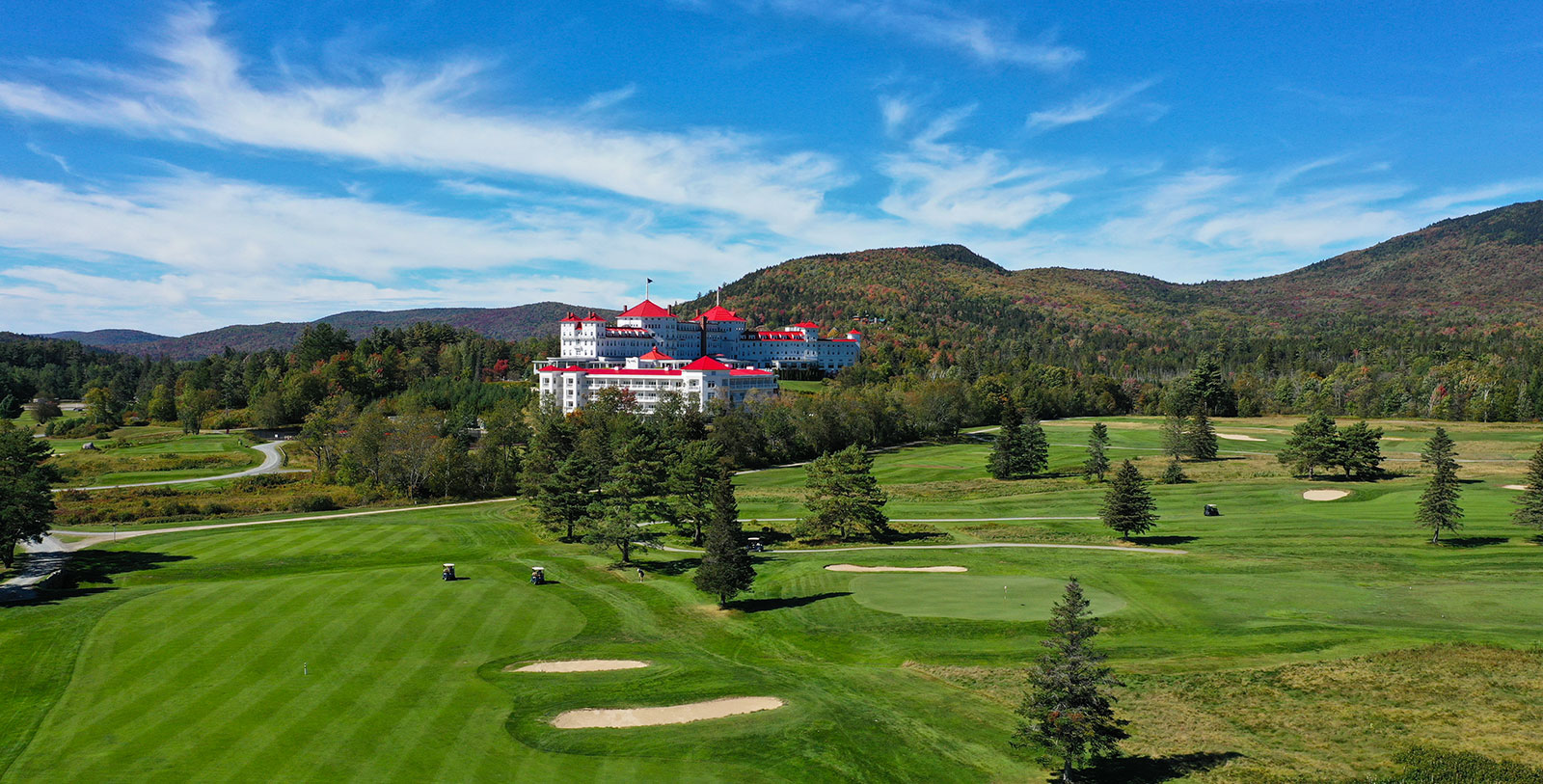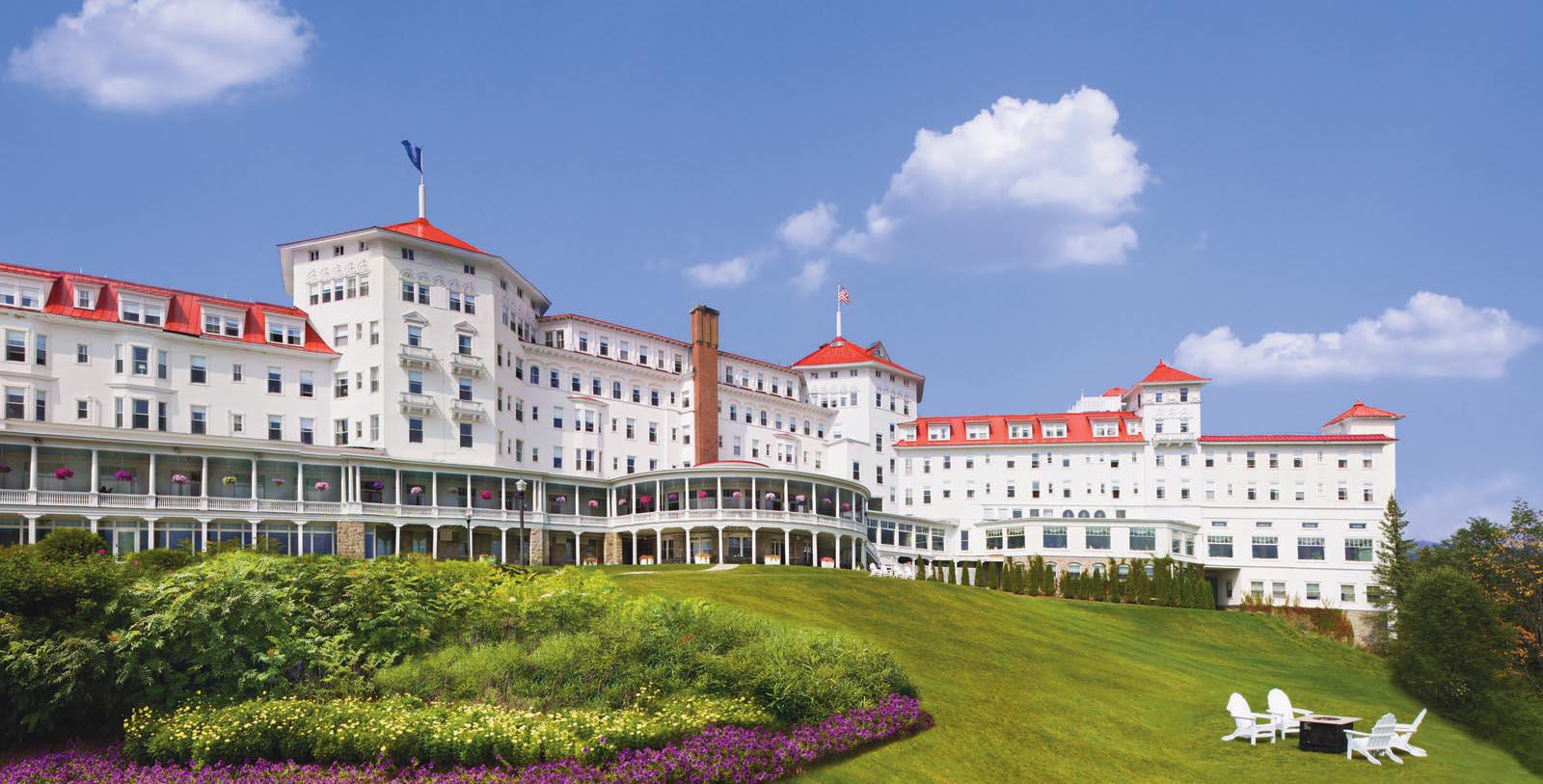Receive for Free - Discover & Explore eNewsletter monthly with advance notice of special offers, packages, and insider savings from 10% - 30% off Best Available Rates at selected hotels.
golf
Discover the Omni Mount Washington’s historic Mount Pleasant Course and Mount Washington Course.
History can be found everywhere on the courses outside of the Omni Bretton Arms Inn, which has been the site of many exciting golf vacations for well over 100 years. As a part of Omni Mount Washington, the Omni Bretton Arms Inn has access to two magnificent historic golf courses—the Mount Washington Course and the Mount Pleasant Course. The earliest of the two courses is the Mount Pleasant Course, which opened in the region as part of the Mount Pleasant House in 1895. (The Mount Pleasant House was eventually demolished in the 1930s and its surviving facilities were turned over to today’s Omni Mount Washington.) It was designed by Scottish golf course architect Alex Findlay, who also spent some time competing as a professional player. The Mount Pleasant Course currently has nine holes – par 35 and just over 3,000 yards of green – that have been played by guests and champions alike, including U.S. Pro Golfer Gilbert Nicholls, U.S. Open Golf Champion Willie Anderson, and British Golf Champions Harry Vardon and J.W. Taylor. The course was updated by Cornish & Silva Golf Course Architects, with advice from world-renowned golfers Gene Sarazen and Ken Venturi in 1989. The second course that guests staying at the Omni Bretton Arms Inn can access is the Mount Washington Course. This is an 18-hole, par 72, 7,004-yard-course designed by legendary golf course architect Donald Ross. Ross was a Scottish-born immigrant who trained as a young man at St Andrews in the 1890s. He then spent most of his career and life in the United States, where he designed many of the world’s championship courses during the “Golden Age of Golf.” His influence on the game and its architecture continues to this day, on his historic courses and on new courses his designs inspired. Since the completion of the Mount Washington Course, it has hosted four New Hampshire Opens and, more recently, the New England Open Championship. (It was restored in 2008 by architect Brian Silva, who updated the course and returned it to its original 1915 design.)
-
About the Location +
The Omni Bretton Arms Inn faces Mount Washington, a celebrated national landmark that defines the landscape of White Mountain National Forest. The location possesses the highest point in the entire northeastern United States, with an elevation of more than 6,000 feet. Originally called “Agiocochock” by local Native American tribes, Mount Washington was named after George Washington shortly after the conclusion of the American Revolutionary War. The use of his name began a tradition in which the names of other U.S. presidents would be applied to the neighboring mountains. In all, seven other mountains bore the names of various presidents, forming a geographic location known as the “Presidential Range.” Those individuals are as follows:
- John Adams, 2nd President of the United States
- Thomas Jefferson, 3rd President of the United States
- James Monroe, 4th President of the United States
- James Madison, 5th President of the United States
- John Quincy Adams, 6th President of the United States
- Franklin Pierce, 14th President of the United States and New Hampshire’s only native son to sit in the Oval Office
- Dwight D. Eisenhower, 35th President of the United States
But local officials continued to name neighboring mountains after other prominent national figures, including Senators Henry Clay and Daniel Webster, as well as Founding Father Benjamin Franklin. The Presidential Range is one of the central features within White Mountain National Forest and can be navigated by traveling along the Presidential Traverse.
Mount Washington itself has attracted curious travelers for years due to its dominant command over the entire area. In fact, John Sebastian Cabot—one of the first Europeans to explore the New England coastline—could even see the mountain’s peak from the Gulf of Maine miles away. Americans have continuously visited Mount Washington ever since, as many have hiked through the region to experience its plant and wildlife. Mount Washington today serves as a training ground for experienced hikers who plan to climb such harrowing destinations as Mount Everest and K2. To help nature enthusiasts to traverse the steep topography of Mount Washington and the greater the Presidential Range, local outdoorsmen cut several massive trails throughout the countryside. Among the most historic of those trails is the Crawford Path, which was first developed by Ethan Allan Crawford in 1819. The pathway navigates the Crawford Notch to reach the summit of Mount Washington. Yet, there are many other novel ways to access the mountain, including the Victorian-era Mount Washington Cog Railway. Founded in 1868, it is the world’s first mountain-climbing cog railway!
-
About the Architect +
Donald Ross: Few other golf course designers have had such an impact on the sport of golf than the legendary architect Donald Ross. Born in Dornoch, Scotland, Ross’ legendary career began when he apprenticed under Old Tom Morris at historic St. Andrews during the late 1890s. He harnessed several important skills from Morris that ranged from club maintenance to landscaping. Ross then used his education to parlay a job at the Royal Dornoch Golf Club near his childhood home. Unfortunately for Ross, the pay was abysmal. With the encouragement of Scottish expat named Robert W. Willson, Ross decided to try to find more rewarding work at one of the many new professional golf facilities that had started opening across the United States. Willson subsequently financed Ross’ trip across the Atlantic in 1899, who helped him settle down just outside of Boston, Massachusetts. Ross accepted a job as the resident golf pro at the Oakley Country Club, where he left an immediate impression upon its members. Word soon spread of his talents, which eventually attracted the attention of prominent businessperson James Walker Tufts. In the midst of developing the resort town “Pinehurst” within the North Carolina sandhills, Tufts decided to hire Ross to head the new settlement’s golf club. Ross headed south that winter, although not without some cajoling from friends who doubted the entire endeavor.
Nevertheless, Ross went to work in 1901, serving as the primary golf instructor for a single, 18-hole course created a few years prior by Dr. Leroy Culver and John Dunn Tucker. Ross decided to completely renovate its fairways after conferring with Tufts, thus jumpstarting the work on the future Pinehurst No(s). 1 – 4 over the next two decades. Over time, they quickly became the treasures that Tufts had originally envisioned. Their success further catapulted Ross’ reputation throughout the United States, inspiring many other destinations to hire him to design their respective courses. In all, Ross would create (and redesign) over 400 unique golf courses across the country, with some of his most notable being at the Seminole Golf Club, Oak Hill Country Club, and the Aronimink Golf Club. Ross was also commissioned to renovate the Mount Washington Course at the neighboring Omni Mount Washington in 1915. He subsequently transformed the layout into a stunning system of 18 different holes that blended in seamlessly into the surrounding countryside. Ross continued to work well into his seniority, often returning to Pinehurst to modify his first four professionally made courses. When he finally died in 1948, he had managed to leave a legacy that few others in the world of golf have come close to matching ever since. In fact, Ross’ legacy is still so great today that the World Golf Hall of Fame even inducted him posthumously several decades later in 1979.
-
Famous Historic Golfers +
Harry Vardon, winner of seven major golf championships that include the U.S. Open and the British Open.
Willie Anderson, winner of four major golf championships, specifically the U.S. Open.
Gilbert Nicholls, professional golfer who finished in the top-two at the U.S. Open twice in 1904 and 1907.
J.W. Taylor, professional golfer from Redcar, England, who was active at the beginning of the 20th century.





































